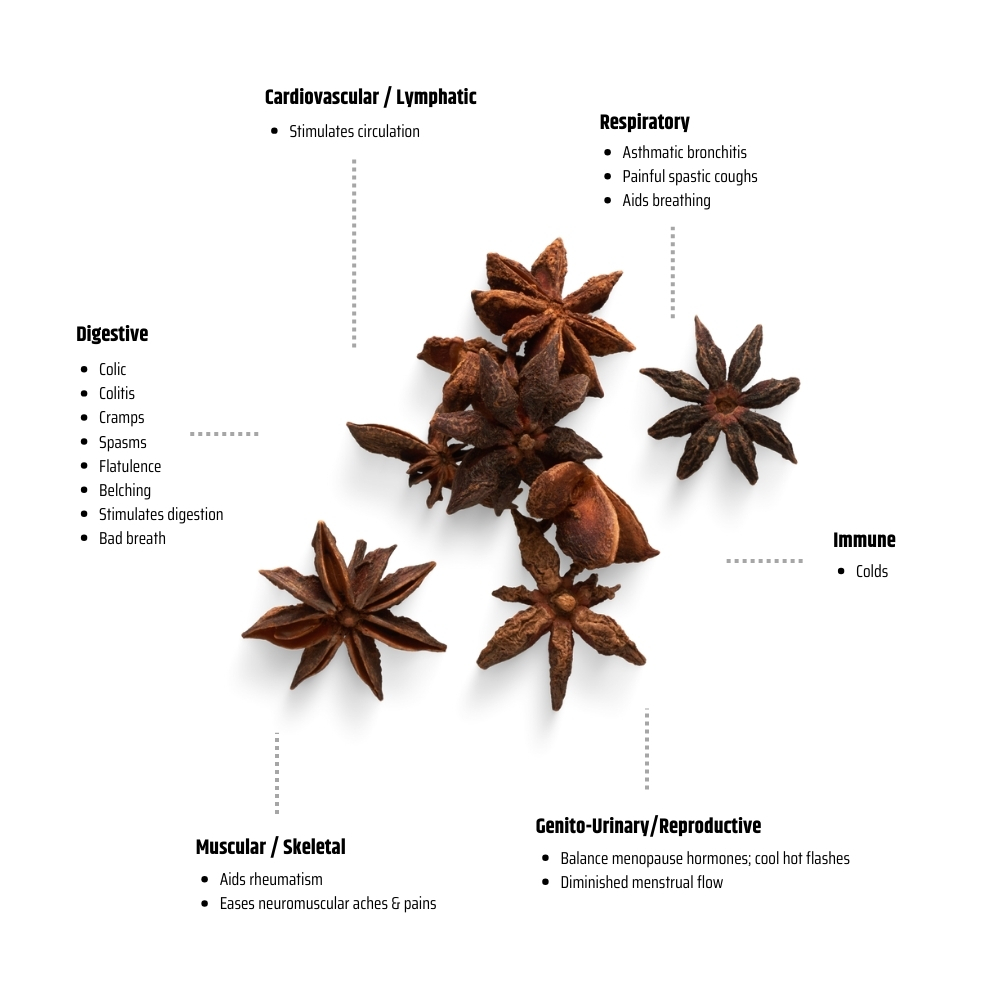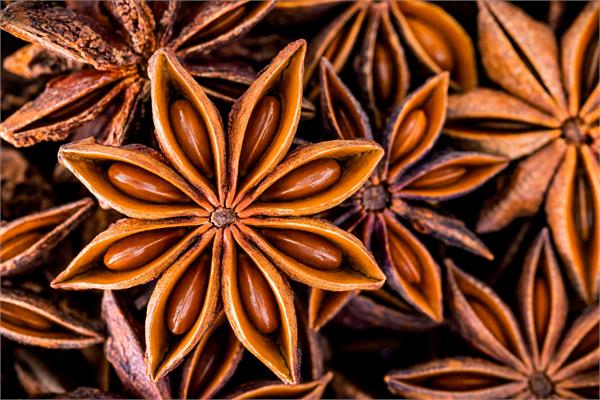
Australian Owned and Operated We have been proudly running for over 30 years

100% Pure & Natural Our products are sourced from the highest quality suppliers and growers from around the world

Not Tested on Animals None of our products are tested on animals

Vegan Friendly Our products are plant based and vegan friendly
Star Anise Essential Oil
Illicium verum | Seeds | Steam Distilled | Origin: China
Star Anise Essential Oil carries a bold, spicy sweet liquorice aroma that is instantly recognisable and deeply invigorating. Steam distilled from the dried fruit of Illicium verum, this oil has long been revered in Traditional Chinese Medicine as a warming and dispersing agent, used to move stagnant qi, support the lungs, and warm the digestive system.
Historically known as “Siberian cardamom,” Star Anise was introduced to Europe via trade in the late 1500s, prized for both its flavour and therapeutic potential. Today, it remains a cherished oil for its comforting effects on digestion, chest tightness, and energetic fatigue. It’s also a natural aromatic stimulant, perfect in blends designed to restore clarity and counter sluggishness.
While similar to Aniseed in aroma and use, Star Anise is notably sharper and more intense, making it ideal for spice forward blends and targeted diffusion. It should be used with care and always diluted due to its potent chemical profile.
✔ Distinct Liquorice Scent
Bold and spicy sweet, with a warm licorice like aroma that enlivens blends.
✔ Warming & Dispersing
Traditionally used to stimulate digestion, clear chest congestion, and move stagnant qi.
✔ Energetic Uplift
A natural pick me up during mental fatigue or emotional heaviness.
✔ Spice Forward Blending Agent
Pairs beautifully with citrus, florals, and other warming spices.
✔ Historic Medicinal Legacy
Used in Chinese herbalism for centuries; introduced to Europe via tea trade.
Uses
Diffuse for warmth and clarity, or dilute in carrier oil (≤1.75%) for massage blends. Avoid during pregnancy or with estrogen sensitive conditions.
Shelf Life
Best used within 2 - 3 years. Store in a cool, dark place. Refrigeration after opening is recommended to reduce oxidation.



 Available for $100 orders and over
Available for $100 orders and over





